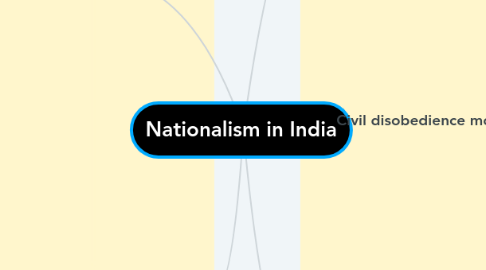Nationalism in India
von mayank kumar

1. Non cooperation movement 1920 to 1922
1.1. Non cooperation movement was launched by Gandhiji in 1920
1.2. Foreign goods were boycotted, liquor shops picketed and foreign cloth burnt in huge bonfire
1.3. In many places, Merchant and traders refuse to trade
1.4. As the Boycott Movement spread and people begin discarding imported clothes and wearing only Indian ones. Production of Indian textile mills and Handlooms went up.
2. Simon Commission 1929
2.1. Sir John Simon was the chairman. Simon Commission did not have any Indian member. All British
2.2. Simon Commission sought to look into the demands of the Nationalist and suggest changes in the constitutional structure of India
2.3. Simon Commission arrived in India in 1928. Congress and the Muslim League along with other parties receive the commission with black flags and slogans 'Go back Simon'
3. Geetika Yadav XB
4. The Rowlatt Act 1919
4.1. Rowlatt Act gave the British government enormous power for repressing political activities and allow detention of political prisoners without any trial for two years
4.2. On 6 April 1919 Gandhiji started the non violence civil disobedience movement for opposing the Rowlatt Act with the nationwide hartal
5. Jallianwala Bagh 1919
5.1. On 13 April 1919 a number of people had assembled at Jallianwala Bagh in Amritsar for attending the annual baisakhi fair
5.2. General Dyer surrounded the park and opened fire on the crowd killing hundreds of people
6. Civil disobedience movement 1930
6.1. Salt march was started from Gandhi's Ashram in Sabarmati to the Gujarat coastal town of Dandi.
6.2. On 6 April 1930 Gandhiji violated the law by manufacturing Salt from seawater
6.3. Peasants refused to pay revenue and chaukidari Taxes
6.4. People violated forest laws by going into reserved forest for collecting wood
6.5. Colonial laws were violated salt was manufactured in numerous places


